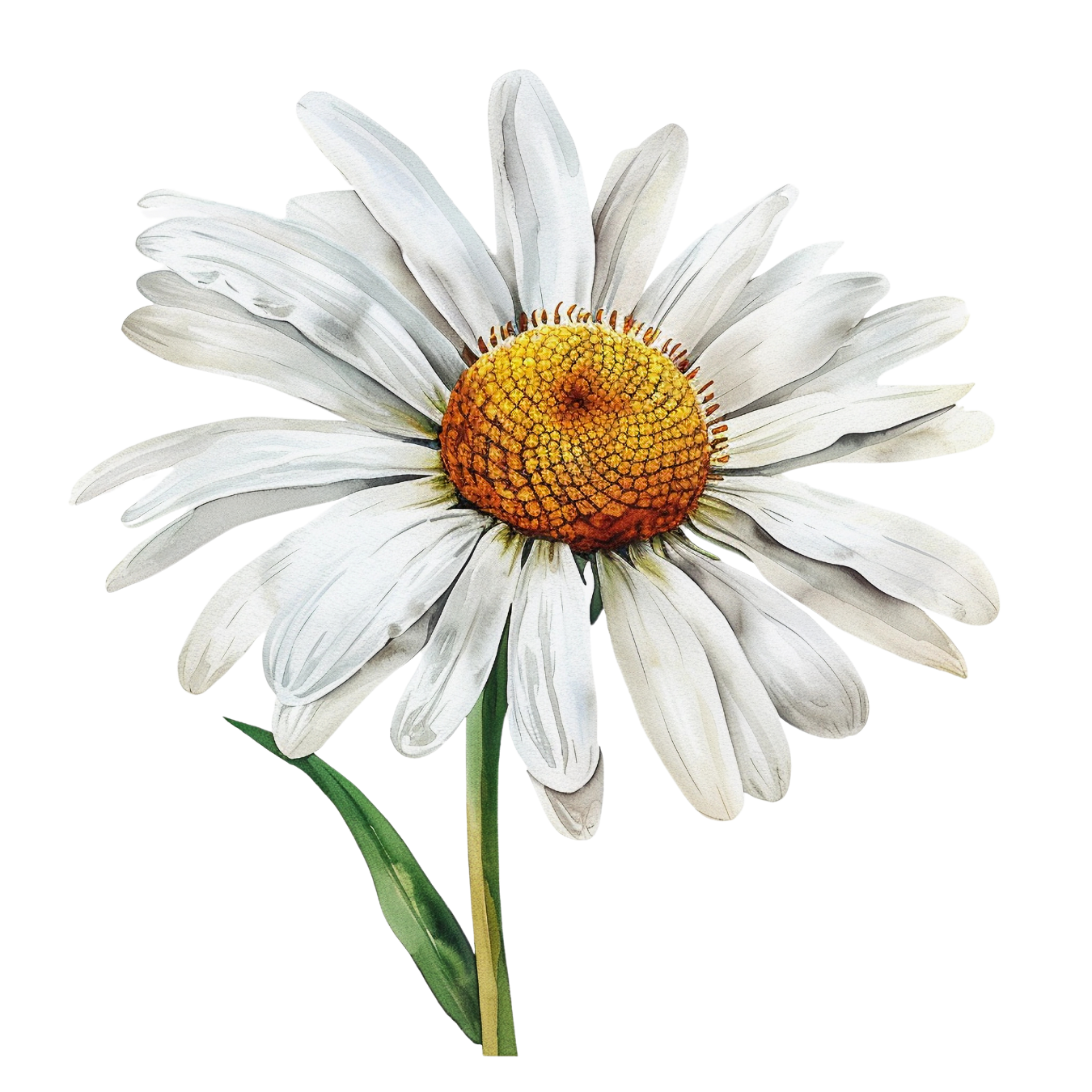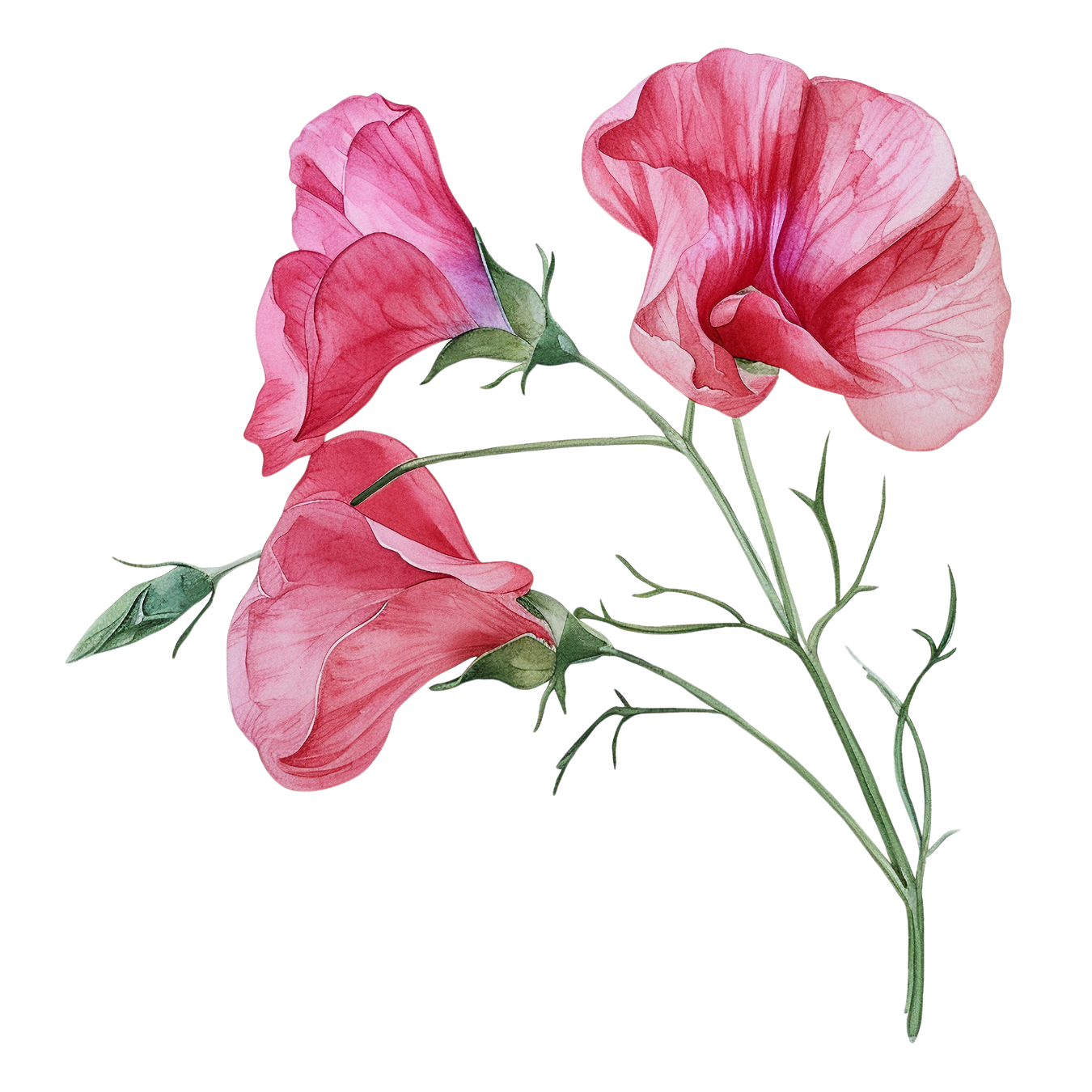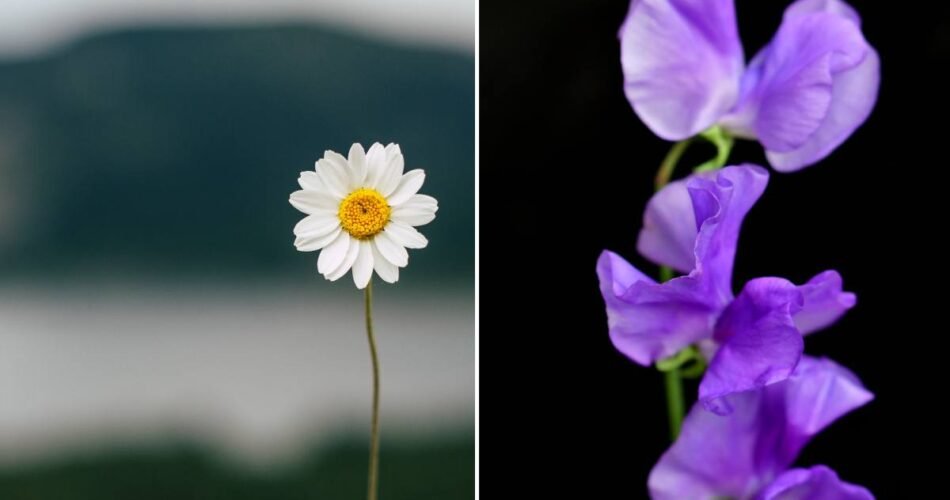What are the April birth flowers?
April is adorned with two captivating birth flowers: the Daisy and the Sweet Pea. Each brings its own unique beauty and symbolism to the month. Daisies, with their simple yet striking appearance, symbolize innocence, purity, and true love, reflecting the freshness of spring. Sweet Peas, known for their sweet fragrance and delicate blooms, represent blissful pleasure, goodbye, or thank you, making them a perfect gesture of appreciation and fond farewell to the colder months.
In this blog post, we will delve into the world of birth month flowers, exploring their meanings, origins, and fascinating facts. We will also explore how these flowers inspire art, creativity, and thoughtful gift ideas. So, let’s embark on this floral journey and uncover the beauty and significance of April birth month flowers.
Related Post: Birth Flowers for all 12 months
History & Origin of Daisies

Daisies, scientifically known as Bellis perennis, are classic symbols of purity and innocence. The name “Daisy” is thought to come from “day’s eye,” because the flower opens at dawn and closes at dusk. This hardy and versatile flower has roots that trace back to ancient Roman and Celtic cultures, where it was revered for its medicinal properties and considered a symbol of the sun due to its round, bright appearance.
The association of Daisies with April likely stems from their early blooming pattern in spring, symbolizing the renewal of life and the pristine beauty of nature during this month. Their ability to thrive in various conditions and their cheerful demeanor make them a perfect emblem for the resilience and renewal that April embodies.
What does Daisies mean?
Daisies are rich in symbolism and carry a variety of meanings across different cultures and contexts. Traditionally, Daisies represent purity and innocence, often depicted in art and literature as a symbol of simplicity and untouched beauty. They also signify new beginnings and true love, making them a perfect symbol for the fresh start that spring brings.
- White Daisies are most commonly associated with purity, innocence, and true love.
- Pink Daisies convey admiration and gratitude, making them a thoughtful gesture of appreciation.
- Red Daisies symbolize boldness and youthful energy, reflecting the vibrancy of life.



The Daisy’s structure, with a yellow center surrounded by white petals, is sometimes interpreted as a symbol of the sun and the purity of its light.
How to care for Daisies
Daisies are known for their hardiness and ease of care, making them a popular choice for gardeners of all skill levels:
- Sunlight: Daisies thrive in full sun but can tolerate partial shade. They perform best when they receive at least 6 hours of direct sunlight daily.
- Soil: These flowers prefer well-draining soil but are quite adaptable to various soil types. For optimal growth, aim for neutral to slightly acidic soil conditions.
- Watering: Keep the soil consistently moist, especially during the first few weeks after planting to establish a strong root system. Once established, Daisies are quite drought-tolerant.
- Fertilization: Apply a balanced, slow-release fertilizer in the early spring to support healthy growth and abundant flowering.
- Deadheading: Regularly removing spent flowers will encourage continuous blooming throughout the season.
Interesting or less known facts about Daisies
- Edible Parts: Surprisingly, both the petals and the leaves of the Daisy are edible and can be used in salads, soups, or as a garnish, adding a mild, peppery flavor.
- Medicinal Uses: Historically, Daisies have been used in traditional medicine for their anti-inflammatory and astringent properties, treating ailments like bruises, wounds, and even arthritis.
- Symbol of Transformation: In Norse mythology, the Daisy is associated with Freya, the goddess of love, beauty, and fertility, symbolizing motherhood and childbirth.
- Astronomical Connection: The Daisy’s open-close pattern, following the sun’s presence in the sky, has led to its nickname “day’s eye,” reflecting its sun-like appearance.
History & Origin of Sweet Peas

Sweet Peas, scientifically known as Lathyrus odoratus, boast a rich history and a captivating fragrance that has made them a garden favorite for centuries. These flowers were first discovered in Sicily by a Franciscan monk, Father Francis Cupani, who sent the seeds to England in the late 17th century. Their sweet fragrance and delicate blooms quickly captured the hearts of English gardeners and spread across Europe.
The association of Sweet Peas with April stems from their early blooming in spring, symbolizing goodbye to the cold months and welcoming the warmth and beauty of the new season. Over time, Sweet Peas have come to represent blissful pleasure, gratitude, and the delicate, fleeting nature of beauty and life itself, making them a poignant symbol for April’s renewal and growth.
What does Sweet Peas mean?
Sweet Peas are cherished for their delightful fragrance and delicate blooms, carrying a wealth of symbolism. These flowers typically signify pleasure, a fond farewell, and thanks, making them ideal for expressing appreciation and goodbyes. The Sweet Pea’s range of colors also adds depth to its symbolism:
- Pink Sweet Peas convey tender affection and a gentle goodbye.
- White Sweet Peas symbolize purity and innocence, often used in weddings and new beginnings.
- Lavender Sweet Peas represent delicate pleasure and an enchanting presence.



The ephemeral beauty of Sweet Peas, which bloom gloriously but for a short time, reminds us to cherish the fleeting moments of joy and the preciousness of time spent with loved ones.
How to care for Sweet Peas
Sweet Peas are a delightful addition to any garden, offering fragrant blooms that can elevate the senses. Here are some tips to help you care for these charming flowers:
- Soil: Sweet Peas prefer rich, well-draining soil. Enriching the soil with compost or well-rotted manure can promote healthy growth.
- Planting: For best results, sow Sweet Pea seeds in late winter or early spring. Soaking the seeds overnight can improve germination rates.
- Sunlight: These flowers thrive in full sun but appreciate some afternoon shade in hotter climates to prevent wilting.
- Watering: Keep the soil moist, especially during dry spells. Sweet Peas benefit from regular watering, which helps keep the blooms coming.
- Support: As climbing plants, Sweet Peas need support to grow. Provide trellises, nets, or stakes to encourage vertical growth and maximize space.
- Deadheading: Regularly removing spent blooms will encourage the plant to produce more flowers, extending the blooming period.
Interesting or less known facts about Sweet Peas
- Royal Fragrance: Sweet Peas were a favorite in the Edwardian gardens of England, and their popularity soared when the fragrant ‘Countess Spencer’ variety was introduced, named after Lady Spencer, an ancestor of Princess Diana. This variety’s large, ruffled flowers became a staple in aristocratic gardens.
- Titanic Connection: Sweet Peas were among the flowers grown in the gardens of Sissinghurst Castle, owned by Vita Sackville-West, a renowned English poet and gardening writer. Her influence helped popularize Sweet Peas in English gardens during the early 20th century, around the same time as the Titanic’s maiden voyage. It’s reported that Sweet Peas were among the flowers displayed in the Titanic’s first-class dining saloon.
- Genetic Milestone: The Sweet Pea has played a significant role in the field of genetics. The pioneering work of Reginald Punnett, who developed the Punnett square, involved Sweet Peas. He used them in his experiments to explain the genetic theory of inheritance and dominant-recessive genes.
April Birth Flower Comparison
| Month | Birth Flower | Characteristics | Symbolism |
|---|---|---|---|
| April | Daisy | Simple white petals with a central disk, classic and pure | Innocence, purity, true love |
Sweet Pea | Fragrant, colorful, climbing plant | Goodbye, departure, blissful pleasure |
What are the popular April birth flower gifts?
April’s Sweet Peas inspire a variety of thoughtful and fragrant gifts:
- Custom Bouquets: A bouquet that combines the delicate blooms of Sweet Peas with other spring flowers can make a fragrant and colorful gift, perfect for April birthdays or special occasions.
- Sweet Pea Scented Products: From perfumes and scented candles to soaps and lotions, products that capture the Sweet Pea’s enchanting fragrance offer a lasting reminder of spring’s sweetness.
- Gardening Kits: For those with a green thumb, a Sweet Pea gardening kit, complete with seeds and growing instructions, can provide the joy of growing their own fragrant blooms.
- Artistic Creations: Watercolor paintings, prints, or illustrations featuring Sweet Peas make for elegant and timeless gifts, capturing the flower’s beauty in art.
Here are some more gift ideas featuring April’s birth flowers to explore.







What are some artistic or creative applications of April birth flower gifts?
Daisies and Sweet Peas, with their distinctive beauty and fragrance, lend themselves to a myriad of artistic and creative uses:
- Floral Art: These flowers can be used as inspiration for paintings, illustrations, and digital art, capturing their essence in various artistic styles.
- Home Decor: Incorporate Daisy and Sweet Pea motifs into home decorations, such as in wall decals, embroidered cushions, or as part of a floral centerpiece.
- Fashion Accessories: These flowers can be stylized into accessories like brooches, pendants, and earrings, adding a touch of spring to any outfit.
- Tattoos: For a more permanent expression, tattoos of Daisies or Sweet Peas can symbolize purity, innocence, and a love of nature.
Conclusion
April’s birth flowers, Daisies and Sweet Peas, embody the spirit of spring with their purity, delicate beauty, and sweet fragrance. They remind us of nature’s cycle of renewal and the joy of witnessing the world come to life after the winter. Celebrating these flowers, whether through gardening, gifting, or artistic expression, allows us to connect with the natural world and share its beauty with others. Let’s embrace these symbols of April and spread their message of innocence, joy, and renewal.
10 FAQs
What are April’s birth flowers?
Daisies and Sweet Peas.
What do Daisies symbolize?
Innocence, purity, and true love.
What is the meaning behind Sweet Peas?
Pleasure, goodbyes, and gratitude.
Can Sweet Peas be grown indoors?
Yes, with proper care and enough sunlight, Sweet Peas can bloom indoors.
Are Daisies edible?
Yes, Daisy petals and leaves are edible and can be used in salads.
How often should I water Sweet Peas?
Keep the soil moist, especially during dry periods, without overwatering.
Do Daisies need full sun?
Daisies thrive in full sun but can tolerate partial shade.
Can Sweet Peas be used in bouquets?
Absolutely, their fragrance and delicate blooms make them a popular choice for bouquets.
Are there different colors of Daisies?
Yes, Daisies come in white, pink, red, and sometimes even in purple hues.
How can I make Sweet Peas last longer in a vase?
Trim the stems at an angle, use fresh water, and keep them away from direct sunlight and heat sources.

